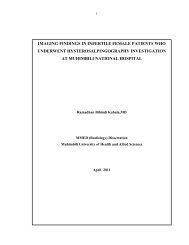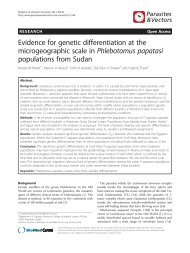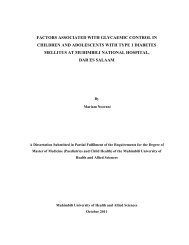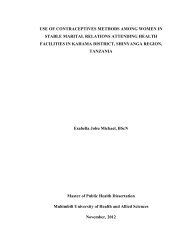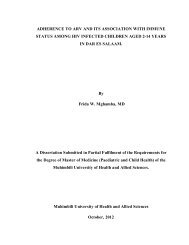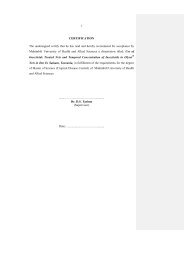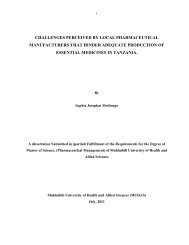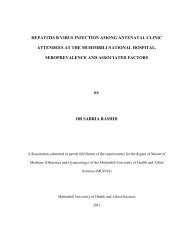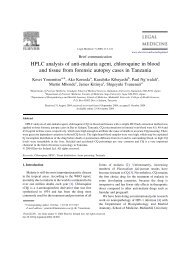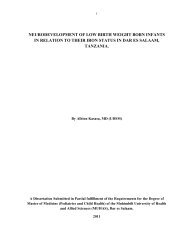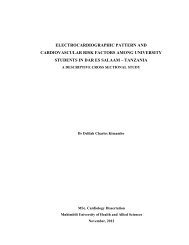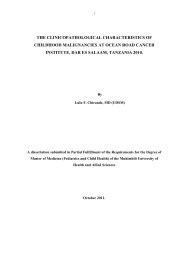DISSERTATION WORK MSAFIRI KABULWA.pdf
DISSERTATION WORK MSAFIRI KABULWA.pdf
DISSERTATION WORK MSAFIRI KABULWA.pdf
You also want an ePaper? Increase the reach of your titles
YUMPU automatically turns print PDFs into web optimized ePapers that Google loves.
5<br />
Institute, King’s College, London, United Kingdom for dental treatment who knew that<br />
cigarette smoking may cause periodontal diseases (Lung et al 2005).<br />
Backinger et al (1993) assessed knowledge, intent to use, and use of smokeless tobacco among<br />
sixth grade schoolchildren in six selected sites in United States. The results indicated that<br />
majority of all sixth grade students surveyed (92.8%) were aware of the health risks of<br />
smokeless tobacco use. The most perceived risk was increased risk for oral cancer. A selfadministered<br />
questionnaire to assess awareness about oral cancer and precancerous lesions was<br />
used to collect information from 410 randomly selected outpatients attending for dental<br />
treatment at a University Dental hospital in Sri Lanka in 2005. The results indicated that 80.7%<br />
of patients were knowledgeable about the causal relationship between betel chewing habit and<br />
oral cancer (Ariyawardana and Vithanaarachchi, 2005). Similar findings have been reported by<br />
Elango et al (2009) among cancer high-risk semi-urban population in India. Results showed<br />
that majority (79%) of the respondents were knowledgeable on relationship between pan<br />
chewing and occurrence of oral cancer.<br />
Impacts of knowledge on adverse effects of tobacco use on tobacco use initiation<br />
A systematic review of 11 original papers was done to evaluate programs designed to prevent<br />
adolescent smoking in South Korea and it was reported that knowledge on smoking delivered<br />
through classroom setting had significant effects in preventing adolescents to smoke tobacco<br />
(Park 2006). An intervention study by Lee et al (2007) was done among Taiwanese high school<br />
adolescents to assess the impact of classroom based smoking prevention curriculum and school<br />
wide no smoking strategy on tobacco smoking behaviour. It was found that those exposed to<br />
both combined methods had significantly higher knowledge on harmful effects of tobacco on<br />
health; had no intention to smoke and their attitude to resist smoking was significantly superior<br />
compared to those exposed to only school wide no smoking strategy and the control group.<br />
Sreeramareddy et al (2008) in their study among college students in Nepal found that students<br />
who had knowledge on the harm effects of tobacco use to their health it protected them from<br />
them from starting using it.



